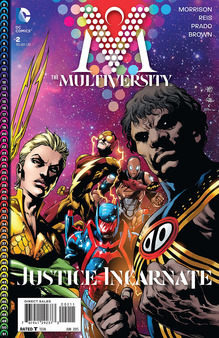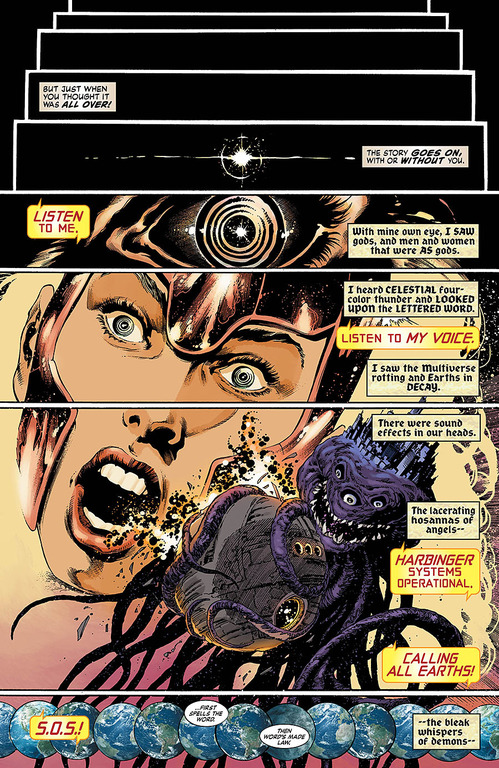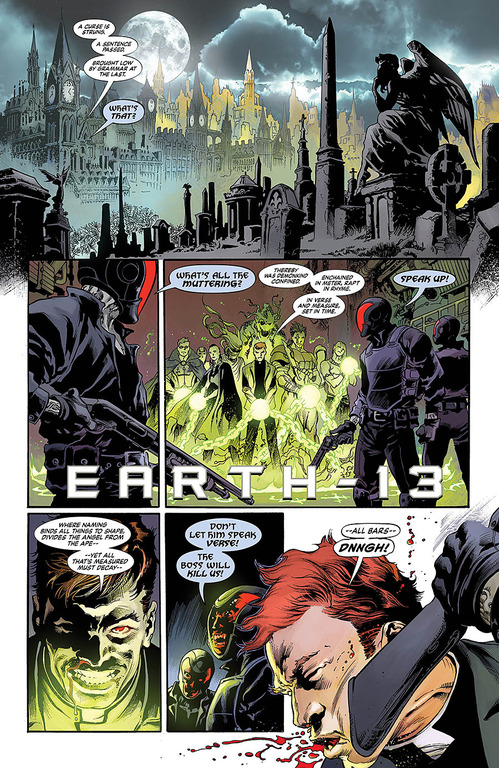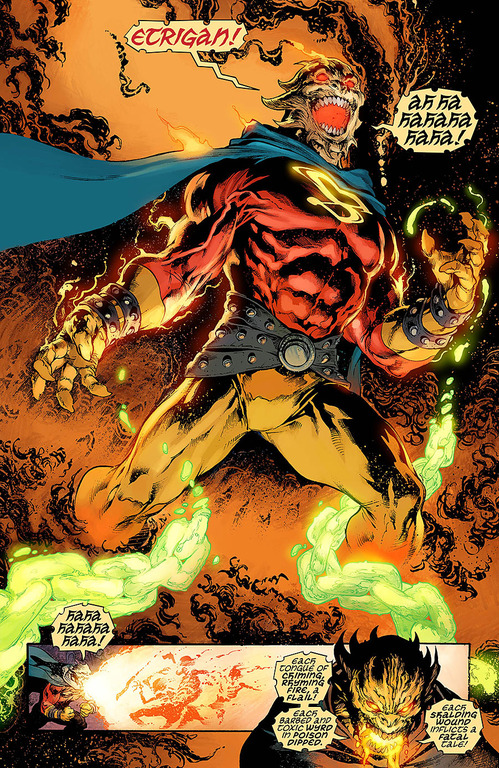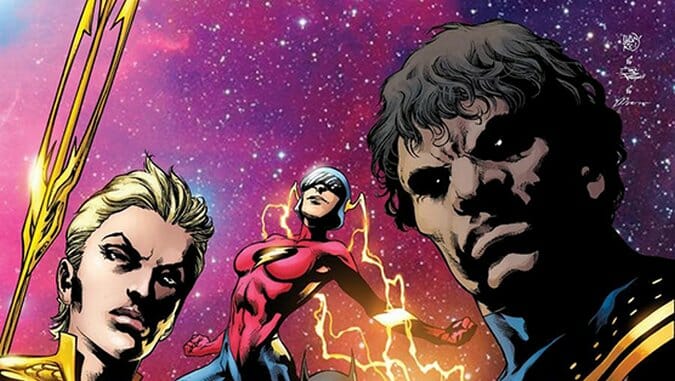
Writer: Grant Morrison
Artist: Ivan Reis
Publisher: DC Comics
Release Date: April 29, 2015
Series Score: 9.2
Spoiler Alerts
The ninth and final issue of Multiversity—The Multiversity #2: Superjudge—doesn’t kick the fifth wall over a la Ultra Comics #1, or reimagine Superman as a walking (flying?) existential crisis like Mastermen #1, the previous two entries into the ambitious mini-series helmed by Grant Morrison.
It’s a load of fun though! A whole bunch of stuff blows up and the good guys win the big one.
Predictable? Maybe? But forgivable. Apart from the main story’s inevitable good-conquers-evil Happy Ending, the book flies as far off the rails as it can possibly manage in every other regard. Multiversity #2 doesn’t tie up many loose ends, either. For those who’ve been out of the loop, this series has consisted almost entirely of one-shot, standalone stories set in contrasting alternate realities populated by new versions of familiar characters: a medieval spin on Captain America from Earth-8 dubbed American Crusader, a version of Arrowette who is also Earth-16’s version of Miley Cyrus, a toddler Batman with no idea he’s actually a robot from Earth-42, ect. Their adventures are loosely tied together by the overarching threat of the entire Multiversity’s (every world ever created under publisher DC Comics) looming demise at the hands of mysterious, gigantics monstrosities known only as the Gentry.
So we’re not told the fate of Earth-10’s Nazi Superman analogue, Overman, from two issues back, for instance. But Morrison’s stated intention for the project was to put pieces in place for future stories; at no point were readers promised a sense of closure for the myriad tales started in this series.
Nor were we directly promised an extraordinarily bonkers finale that plays out much more cohesively than it probably should, given the presence of way, way too many superheroes…but we got it anyway.
In Multiversity #1, the first chapter of this saga, the Gentry murdered every one and thing that moved—especially the superheroes save lone survivor, Thunderer—then murdered them again for fun on Earth-7. But just because the Gentry can easily dispatch one set of Justice League/Avengers analogues doesn’t mean they can do the same with a few hundred of them scattered across string theory realities.
In the course of Multiversity #2—illustrated with bravado by Ivan Reis—an omniscient artificial intelligence named Harbinger summons an army of heroes from across the 51 universes to Earth-8, with the intent to cancel the Gentry’s mad scheme of absolute galactic extinction. But the big, big fight lies mostly in the background to highlight some neat-o character moments. Aforementioned elemental god Thunderer (think Australian Thor) and Aquawoman (self-explanatory) both engage in memorable moments of ass-kickery. A brainwashed Nix Uotan, or guardian of the multiverse, decapitates Captain Carrot, but the eight-foot-tall talking rabbit reattaches his head to his body, no-harm-no-foul, via the power of cartoon physics.
“What power triumphs over sheer absurdity?” he asks, deftly but accidently summarizing the comic book in which he is currently appearing.
Red Racer—Earth-36’s answer to The Flash, ironically inspired to become a super-speedster by reading Flash comic books on his world—runs across the Earth six-times-per second, breaks the dimensional barrier hundreds of times over, and gathers a legion of him(her)self to deliver an infinite mass punch, multiplied 15 times, that rattles Uotan out of the mind control trance that turned him evil back in issue #1, and restores him to a nobler incarnation, Super Judge: The Last of the Monitors.
Once the day is saved (for now) and the sky-sized villains have all bitten dust, Uotan wakes up in his bedroom, and achieves the ultimate victory on the final page of Multiversity: paying his rent.
Credit to Reis and the rest of the art squad: it requires seriously versatility to handle a gig where a moon-sized, three-eyed tentacle monster with a city for hair attacks a space station on one page, a cartoon bunny in tights and a cape strikes a badass pose on another, and the story settles in a domestic apartment.
Overall, The Multiversity probably isn’t the best thing Grant Morrison has ever written, but it is the most organically weird series either of the comic industry’s Big Two has published in recent memory—and the fact that it’s mostly the opposite of a convoluted clustermuck is an achievement, given the volume of its cast.
It also makes a rare, possibly inadvertent and effective case for analogue over digital entertainment consumption. Part of the fun of Multiversity is holding physical copies of the same comics the story sends across dimensional borders as warnings, curses and instructions to other worlds. This raises, for once, a practical question—how the heck is that novelty supposed to translate to the collected editions? Did anybody think ahead about that?
